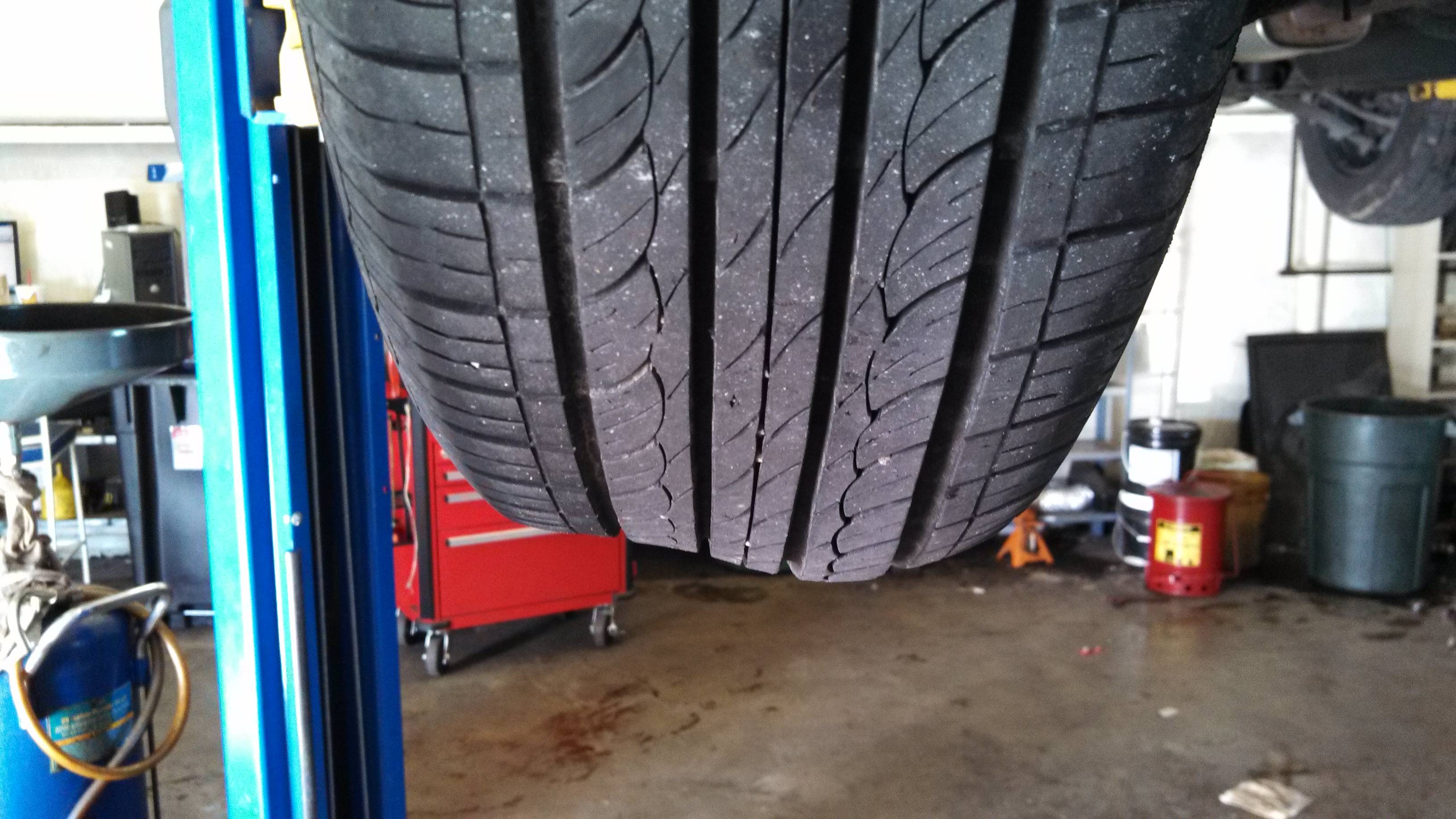Granted, tires are the most common cause of vibrations and they’re usually the easiest to diagnose and cheapest to fix, but they are by no means the only cause of vibrations.
There are many conditions that can cause your vehicle to shake. In short, anything that rotates can cause vibrations: Transmission, drive line, brakes e.t.c.
We will be looking at possible causes of tire vibration and wobble when your car is in motion and give you some simple guidelines to “pre-diagnose” any shakes you have so you’ll know where to turn for help.
Shakes Not Caused By Tires
My car shakes when I hit the brake, especially during hard braking: This is commonly caused by warped or bent Brake Rotors (popularly known as Brake Disc in Nigeria). The Rotors are the part of the disc brake that rotates, and when you apply the brakes, the calipers squeeze the rotor to make the vehicle slow down. Over time, heat causes the rotors to warp and you get a pulsation in the pedal and often in the steering wheel, especially under hard braking. If this is the type of shake you have, you should have the rotors checked for warping. If they are warped, they can be machined (turned) to be straight again, but you can only turn them a couple of times before they get too thin, at which time they must be replaced.
My car front end wobbles at certain speed but not every time I drive at that speed: This is usually caused by loose suspension parts or bearings like the tie-rod, upper/lower arms e.t.c. What happens here is that a loose suspension component can allow the front end to start wobbling, like when you hit a bump, and once the wobbling starts, you have to slow down, or even stop to correct it. Tires are very consistent, they will always do the same thing at the same speed. So if the vehicle only wobbles some of the time, it is usually a loose or worn out suspension component that is to blame. In this case, you should see your mechanic.
My tire wobbles when accelerating hard or climbing steep hills: This type of vibration is usually caused by motor mounts which supports the engine. If they become worn, vibrations can show up when accelerating hard, or pulling hills. Experienced mechanics can diagnose this easily.
There are still some other type of Non-Tire related shakes, but the list above are the most easiest and common diagnosis. Transmissions and drive lines can also cause shakes too, but they are not quite as simple to diagnose.
Shakes Caused By Tires
Tires are very consistent, they will wobble at the same speed every time, whether, you’re driving at a constant speed, braking, or accelerating. So if your car shakes at the same speed (or speeds) every time, tires are the first thing to check.
First thing to do, check for Cupping and Flat Spots: The simple test is to run your hand along the face of the tire, and you can feel it. (You will need to be careful of small metal spikes protruding from the tire, so you don’t get cut!) If the tire is flat, then good, if it has small wave like lumps on its surface, you have cupping. It’s also easy to check for flat spots. Like the name, instead of the tire having a round profile, there will be one spot on the tire that has been shaved off, (or flattened). You can feel it with your hand, or if you spin the tire, there will be an obvious dip when it gets to that spot. If it’s not too bad, you can sometimes rotate the tires, since the front tires will usually be worse than the back. If not, the flat spotted tires will have to be replaced.
In other cases, wheel balancing can help to correct wobbling when there are no issues detected on the tires. The best recommended wheel balancing technique is the Road Force Balancing.  Road Force Balancing is a relatively new technology. The idea is that a “force wheel” is mounted on the balancer, (this is the black roller wheel on the right side of the balancer in front of the hood) and as the tire turns, the wheel pushes against the tire and measures variations in pressure around it’s circumference. Since this simulates how the tire will interact with the road, it is called “road force balancing”. These balancers have prescribed “tolerances” that allow different levels of “road force variation” for different types of vehicles
Road Force Balancing is a relatively new technology. The idea is that a “force wheel” is mounted on the balancer, (this is the black roller wheel on the right side of the balancer in front of the hood) and as the tire turns, the wheel pushes against the tire and measures variations in pressure around it’s circumference. Since this simulates how the tire will interact with the road, it is called “road force balancing”. These balancers have prescribed “tolerances” that allow different levels of “road force variation” for different types of vehicles
 Spot Dem Everything About Cars
Spot Dem Everything About Cars




